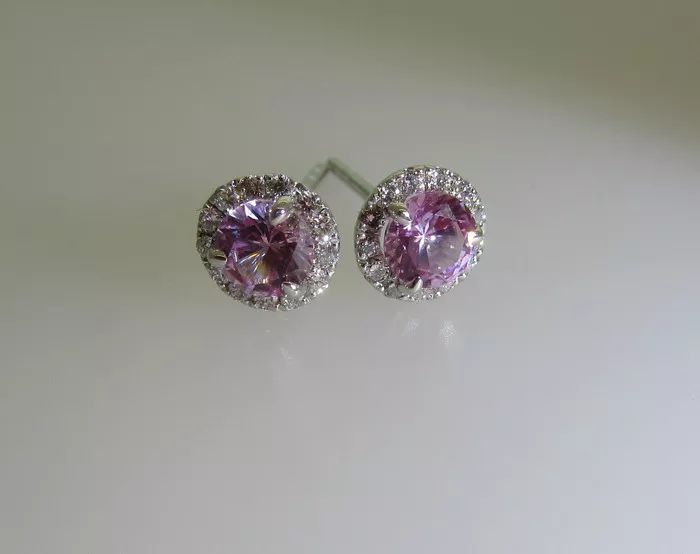Diamond stud earrings are not just accessories; they are investments in elegance and sophistication. When considering purchasing diamond studs, one of the most critical factors is determining what constitutes a fair and reasonable price. This comprehensive guide aims to demystify the pricing of diamond stud earrings, covering essential aspects such as diamond quality, setting styles, market trends, and evaluating value for money.
Understanding Diamond Quality
The value of diamond stud earrings largely hinges on the quality of the diamonds themselves. The famous “Four Cs” — cut, color, clarity, and carat weight — serve as universal metrics for assessing diamond quality.
Cut
The cut of a diamond influences its brilliance and overall appeal. Well-cut diamonds reflect light beautifully, enhancing their sparkle. The GIA (Gemological Institute of America) grades diamond cuts from Excellent to Poor, with Excellent cuts commanding higher prices due to their superior light performance.
Color
Diamond color is graded on a scale from D (colorless) to Z (light yellow or brown). Colorless diamonds (D-F grades) are the most desirable and therefore more expensive. The presence of color can significantly affect the price of diamond stud earrings, especially in larger stones where subtle differences in color become more apparent.
Clarity
Clarity refers to the presence of internal and external flaws, known as inclusions and blemishes, respectively. Diamonds with fewer and less visible imperfections receive higher clarity grades (IF, VVS1, VVS2, VS1, VS2), commanding higher prices due to their rarity and visual appeal.
Carat Weight
Carat weight measures the size of the diamond. Larger diamonds are generally more expensive per carat than smaller ones, assuming all other factors are equal. However, the price per carat can increase disproportionately for diamonds that reach significant weight milestones, such as 1.00 carat or higher.
See Also: What Is the Best Size for Diamond Stud Earrings?
Setting Styles and Metal Choices
Beyond diamond quality, the setting style and metal choice greatly influence the price of diamond stud earrings. Popular settings include prong, bezel, and halo settings, each affecting how the diamonds are displayed and secured. The metal setting, typically platinum, white gold, yellow gold, or rose gold, also impacts the overall cost. Platinum, known for its durability and rarity, tends to be the most expensive metal choice, while gold alloys offer a range of prices depending on purity and market fluctuations.
Market Trends and Pricing Considerations
Diamond prices are influenced by market dynamics, including supply and demand, economic conditions, and even consumer preferences. Understanding these trends can help buyers navigate the market and make informed decisions regarding diamond stud earrings.
Supply and Demand
The diamond market operates under principles of supply and demand. Rarity plays a crucial role in pricing; diamonds that are scarce or in high demand due to fashion trends or marketing campaigns may command higher prices.
Economic Factors
Economic conditions, such as currency fluctuations and global economic stability, can impact diamond prices. During economic downturns, consumers may opt for smaller or less expensive diamonds, affecting market prices accordingly.
Consumer Preferences
Changing consumer tastes and preferences influence the popularity of certain diamond characteristics and styles. For instance, the shift towards ethically sourced diamonds has led to increased demand for diamonds certified as conflict-free, affecting their availability and pricing.
Evaluating Value for Money
While price is a critical factor, the value for money should ultimately guide purchasing decisions. Value is determined by assessing how well the price aligns with the quality of the diamonds, the craftsmanship of the setting, and the reputation of the retailer or jeweler.
Comparing Options
Comparison shopping is essential when buying diamond stud earrings. By comparing similar diamonds across different retailers, both online and in-store, buyers can gauge market prices and identify competitive offers.
Certification and Documentation
Reputable jewelers provide certification from recognized gemological laboratories, such as the GIA or AGS (American Gem Society), verifying the quality and authenticity of the diamonds. These certifications serve as assurances of value and can aid in price comparison.
Warranty and Return Policies
Understanding the warranty and return policies offered by jewelers is crucial for protecting the investment. Reputable retailers often provide warranties covering manufacturing defects and offer flexible return policies, ensuring customer satisfaction and peace of mind.
Conclusion
Determining what constitutes a good price for diamond stud earrings involves a multifaceted evaluation of diamond quality, setting styles, market trends, and value for money considerations. By understanding the factors that influence diamond pricing and conducting thorough research, buyers can make informed decisions that align with their budget and aesthetic preferences. Whether purchasing for oneself or as a gift, diamond stud earrings represent timeless elegance and enduring value when chosen wisely.

